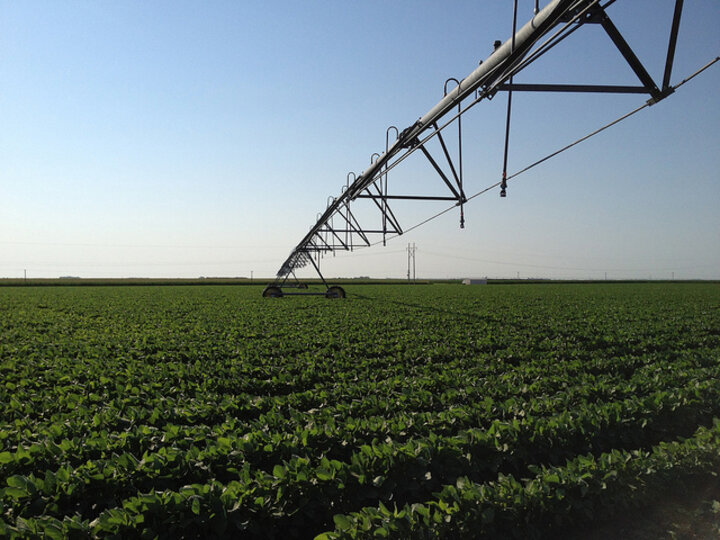
Supported by NSF grant DBI #1331895
This project investigates the feasibility of wireless underground sensor networks (WUSNs) for soil parameter monitoring and devises next-generation autonomous irrigation management tools to improve crop production efficiency. Agriculture is the largest user of freshwater resources, accounting for about 70-80% of current withdrawals. With the increasing demands and the emerging scarcity in freshwater resources, increasing the crop yield is essential. The wirelessly connected, permanently installed underground sensor networks can feed real-time information from the soil to the irrigation management system, improving crop yields in a cost-effective manner. This project develops a proof-of-concept irrigation management testbed and associated agricultural practices and tools for autonomous control of a center pivot irrigation system. The developed tools are integrated into a heterogeneous architecture that consists of underground sensing components, relay nodes, a cloud-based management system and mobile components. These results of this project will make significant contributions to the implementation of the variable rate irrigation concept. Moreover, irrigation-scheduling protocols developed using the WUSN will account for different soil textural classifications. While transforming irrigation practices, the research also devises sustainable underground system solutions through development of unique antenna designs; transmit power control techniques, and vibration energy harvesting systems. The resulting prototype is the first sustainable wireless underground sensor system and enables investigation of the relationships between locally-sensed data and crop yields. Accordingly, the project develops on-line management tools that will enhance crop production efficiency in the long-term.
Projections by the Food and Agriculture Organization of the United Nations indicate that the World population will reach over 9 billion by 2050. Ever-increasing limitations in freshwater resources coupled with population growth have increased the competition for water between various sectors and substantially increased the pressure on water users. To meet the food and fiber demand of rapidly growing World population, new technologies are required for production agriculture. This difficult and challenging task requires multidisciplinary efforts to couple various engineering and science disciplines. The developed innovative autonomous irrigation management paradigm in this project is a new generation concept that can achieve such broad impacts. The project supports graduate students from computer science and engineering and biological systems engineering to foster interdisciplinary research. The results and the insight from this project are disseminated to farmers and agriculture industry through University of Nebraska-Lincoln Extension programs and networks as well as high quality publications, local, regional, national and international conferences and journals.